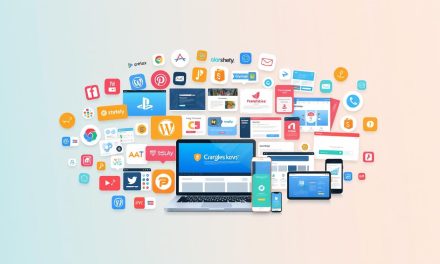Working independently in France means the market shifts quickly. Automation and digital change affect roles and client expectations. To stay competitive, many professionals adopt targeted education and development plans.
Purposeful study builds in-demand skills that lead to better clients, higher rates, and steadier projects. Regular skill checks and recognized certifications increase credibility and trust with discerning clients.
Set small, weekly time blocks to study and apply new techniques. Over weeks, those focused efforts compound into real career growth and measurable success. For practical steps and data-driven guidance, see a concise guide on professional training for independent workers: formation continue for independents.
Table of Contents
Key Takeaways
- Targeted development keeps you relevant in a fast-moving industry.
- Short, regular study sessions protect billable time while boosting skills.
- Certifications and proof of outcomes build client trust.
- AI and verified skills can raise productivity and credibility.
- Small, steady improvements compound into higher earnings and stability.
Why Continuous Learning Powers Professional Growth for Freelancers Today
Staying current with new tools and methods lets independent pros speak clients’ language and win smarter briefs.
Clients now expect verified capabilities. Certifications and CPD records reduce perceived risk and make proposals easier to accept. In areas like AI, SEO, cybersecurity, and cloud (AWS, Google Cloud, Azure), validated skills raise credibility fast.
New skills link directly to higher rates and better clients. You can pitch larger scopes, write stronger proposals, and negotiate from a place of expertise. Over time, this shifts your role from task-executor to strategic partner.
« CPD and verified credentials often turn exploratory calls into paid contracts—clients pick providers with proven results. »
Staying current also widens opportunities. Mastering trends lets you offer profitable services and respond when platforms or market needs change.
| Benefit | What It Means | Client Outcome |
|---|---|---|
| Verified Skills | Certs and CPD records | Higher trust, faster onboarding |
| Technical Depth | AI, cloud, security | Higher-value projects, premium rates |
| Market Agility | Trend awareness | Better proposals, more opportunities |
- Link new skills to clear client benefits: speed, conversions, or security.
- Build confidence to move from doing tasks to advising clients.
- View development as a compounding career strategy that improves leads and income.
Freelance Continuous Learning: A How-To Roadmap to Stay Competitive
Set a clear outcome first. Decide where you want your business in 6–12 months, then list the skills that make that outcome realistic. Reverse-engineering goals keeps development focused and cost-effective.
Setting the right approach for an evolving gig economy
Use a simple cadence: research the industry weekly and pick one priority per month. Pair each priority with a marketable service or offer.
Choose methods that match your work pattern. Try micro-lessons during breaks, one deep-dive per week, and practice projects that mirror client briefs.
« CPD helps professionals set SMART goals and integrate training without losing billable hours. »
Create a compact dashboard to track goals, courses, progress, and the impact on proposals and rates. Use flexible, accredited options to manage cost and ensure relevance.
| Step | Action | Outcome |
|---|---|---|
| Goal setting | Define 6–12 month targets (revenue, clients) | Focused skills list |
| Cadence | Weekly research; monthly priority | Steady progress |
| Practice | Micro-lessons + project work | Portfolio-ready results |
Address barriers up front: book protected time, pick accredited modules, and lean on communities for referrals. Share small artifacts for feedback and iterate until offerings are client-ready. For a concise guide on building this path, see a practical path to success.
Assess Your Skills and Gaps Before You Invest
Start by auditing your recent work to spot clear strengths and gaps. A quick self-check saves time and money before you invest in education or paid courses.
Begin with two sources: your own project list and direct client feedback. List every service you delivered in the last 6–12 months and mark where your confidence was high and where you felt stretched.
Use client comments and reviews to find blind spots and recurring praise. Turn those notes into a simple skills map that highlights what brings results and what needs more depth.

Build a visual inventory
Create a compact table or chart that ranks each skill by confidence, demand, and revenue impact. Tag every project in your portfolio to the skill it demonstrates. This makes gaps obvious and shows which case studies to add next.
- Audit services from the past year and note strong vs. weak areas.
- Extract lessons from client emails, reviews, and debriefs.
- Rank skills by confidence, demand, and income impact to set priorities.
« A visual skills inventory turns vague goals into clear development steps. »
| Item | What to record | Outcome |
|---|---|---|
| Recent services | List by project, date, result | Quick audit of strengths |
| Client feedback | Praise and pain points | Blind spots and proof points |
| Skill ranking | Confidence / demand / revenue | Prioritized development focus |
Convert the inventory into an actionable plan: pick one high-impact skill and one supporting skill per cycle. Revisit the inventory monthly and validate priorities with short informational interviews or mentors. For ideas on showcasing updated work, review this guide to portfolio essentials: portfolio essentials.
Read the Market: Identify High-Demand Skills and Trends
A quick market scan on job platforms reveals which tools and roles are truly in demand.
Scan job boards and platforms
Check LinkedIn and Upwork weekly to record recurring job titles, tools, and certifications. Capture exact wording so your profile and proposals mirror market language.
Spot rising areas
Look for growth in AI, cybersecurity, cloud (AWS, Google Cloud, Azure), SEO, UI/UX, digital marketing, programming (Python, JavaScript, Java), and content marketing. These domains show the most active listings and clearer paths to higher rates.
Balance technical and soft skills
Technical depth matters, but strong communication, negotiation, and time management convert expertise into repeat projects. Track social media chatter among hiring managers to spot early trends like GA4 or serverless.
- Create a repeatable routine: weekly scans of LinkedIn and Upwork, then compare with industry reports.
- Prioritize high demand areas while keeping UX and conversion copy as evergreen skills.
- Note platform differences — what sells on Upwork may not match LinkedIn outreach.
- Turn findings into offers: propose short audits or pilots that map to stated pain points.
« AI tools are reported to boost productivity for 95% of users, and the gig workforce may exceed 1.6 billion by 2025 — a signal of expanding opportunities and competition. »
Choose Effective Methods and Platforms for Learning
Combine formal courses with real-world practice to turn knowledge into billable work. Pick formats that match your schedule and goals so study feeds proposals and delivery.
Online courses on Coursera, edX, and Udemy offer flexible curricula and certificates you can show on profiles.
Workshops and events
Attend workshops or industry events for hands-on practice and live feedback. These sessions speed up skill gains and build useful networking contacts.
Daily resources and on-the-go formats
Curate a small list of books, blogs, newsletters, and RSS feeds to stay current without overload. Add podcasts and webinars for commutes so learning fits around client work.
Practice projects and feedback
Turn course material into mini projects: a teardown, prototype, or case study. Share work with mentors or peer groups to get targeted feedback and reinforce skills.
- Choose online courses that end with recognized certificates.
- Mix workshops and events for live Q&A and practical experience.
- Use tools like Notion or Trello to track notes, links, and next actions.
- Translate course content into templates, checklists, or demo assets for clients.
« Regular practice and focused feedback are the fastest route from study to client-ready delivery. »
Build a Practical Learning Plan with SMART Goals
Start with one measurable target that directly affects an active client project. SMART goals (Specific, Measurable, Achievable, Relevant, Time-bound) anchor progress and keep study practical. This approach helps you convert short study sessions into clear business outcomes.
Define outcomes tied to projects, clients, and revenue targets. Pick one deliverable per month and link it to a live brief or portfolio piece. That keeps development focused and reduces wasted effort.
Define outcomes tied to projects and revenue
Write one SMART goal each month and attach it to an actual project. Estimate the weekly time needed and slot it into your calendar like a client meeting.
Prioritize courses that match your niche
Choose resources that solve the problems your best clients pay for. Favor courses with practical assignments you can reuse as proposal assets or case studies.

- One SMART goal monthly (e.g., finish a GA4 course and ship a tracking template) to make progress tangible.
- Tie each goal to a deliverable so study supports real business results.
- Estimate weekly time and protect it on your calendar for focused work.
- Set milestones (certification, case study, trial project) to measure development momentum.
- Pair 1–2 complementary skills (SEO + CRO) to multiply impact.
« Monthly reviews help freelancers track advancement and adjust strategy quickly. »
Balance Learning with Client Work Without Burning Out
Treat skills work like a client — schedule it, honor it, and track outcomes. Protect short, regular blocks so growth does not collide with delivery.
Time-blocking and routines that protect focused study time
Block 60–90 minutes for deep study two to three times a week and treat that slot as a non-negotiable call. Align study with your energy curve: mornings for heavy topics, afternoons for light practice.
Automate and delegate admin with tools to free hours for learning
Use simple automation to cut admin: scheduled reminders, template proposals, and streamlined invoicing reclaim focus. Project management tools can handle scheduling and follow-ups so you can spend more time on skills and delivery.
Integrate micro-learning into daily activities
Fit ten-minute tutorials into coffee breaks, listen to a podcast on walks, or read a short article between tasks. Pair each learning sprint with a small project to lock in results without adding stress.
Monthly reviews show what stuck and what to drop. Adjust goals when work spikes and protect recovery time.
| Action | Why it helps | Suggested cadence |
|---|---|---|
| Deep blocks (60–90 min) | Focus builds real skills | 2–3x weekly |
| Automation & templates | Reduces admin and interruptions | Set once, reuse |
| Micro-learning | Small wins that stack | Daily snippets |
For practical tips on balancing work and life while keeping growth steady, see these tips for balancing work and life.
Turn New Knowledge into Portfolio-Worthy Results
Translate study into deliverables that clients can see, test, and buy. Make small wins visible so your work speaks before a conversation starts. Focus on outcomes that show clear value.
Apply skills in small projects, case studies, and content
Convert each new topic into a compact project — an audit, prototype, or teardown with before-and-after metrics. Publish short case studies that state the challenge, your process, and results.
Produce demo content like walkthroughs, Loom clips, or a GitHub repo to show approach and make it easy for prospects to judge your experience.
Use recognized certifications and CPD to boost credibility
Certificates from Coursera, edX, or Udemy and CPD badges add trust as platforms add skill verification. Add these to profiles and proposals to ease risk for cautious clients.
CPD-backed portfolios often convert exploratory leads into paid work.
- Convert topics into a small project with clear metrics.
- Publish concise case studies to show impact to clients.
- Add recognized certifications and CPD badges to boost credibility.
- Share content demos and request targeted client testimonials tied to specific skills.
- Use light networking to share project threads and attract feedback.
- Keep an achievements log of shipped artifacts, lessons, and next steps; update service pages and pricing when outcomes repeat.
Measure ROI: From Skills to Earnings, Clients, and Opportunities
Measure the real impact of new skills by linking training to clear business numbers. Start with a small set of KPIs that matter to your offers and local market. Track changes month to month to see what actually moves the needle.
Track metrics: rates, project scope, client quality, win rate
Define ROI metrics up front. Record average project value, effective hourly rate, client retention, and proposal win percentage. These figures show whether development turns into higher income and better opportunities.
- Check if skills increase scope — larger deliverables, multi-phase engagements, or advisory roles.
- Monitor client quality — clearer briefs, established brands, and bigger budgets are leading signs of momentum.
- Compare your outcomes to the market to find niches that deliver repeatable business results.
- Attribute wins to specific skills or certifications so you know where to invest next for career growth.
Review monthly and adapt your learning strategy
Hold a short monthly review. Ask: what learning produced measurable impact? What stalled? Then pivot, double down, or pause accordingly.
« Use a simple KPI dashboard to visualize trends and keep decisions data-driven rather than reactive. »
Celebrate small wins to keep motivation high. Over time, tracked improvement in rates, project scope, and win rate opens better opportunities and steady career growth.
Conclusion
Finish strong: treat your skills roadmap as a business plan, not a checklist. For freelancers in France, CPD and recognized certificates help future-proof careers by showing clients real credibility.
Commit to one focused skill at a time and protect short study blocks. Small, steady progress compounds into measurable development and better business results.
Use platforms, community networks, and market signals from LinkedIn or job boards to pick high-demand areas. Turn each course or workshop into a project that your clients can test.
Expect change, lean on peer recommendations to cut cost and time barriers, and use monthly reviews to track what moves revenue and opportunities. With smart investment and clear proof points, success becomes repeatable.
FAQ
What is the fastest way to identify which skills will boost my earnings and attract better clients?
Start by scanning job boards and professional platforms like LinkedIn and Upwork to spot recurring requirements. Combine that with client feedback from past projects and market reports on trends such as AI, cloud services, cybersecurity, SEO, UI/UX, and digital marketing. Prioritize skills that both match your niche and have clear paths to higher rates or larger projects.
How do I assess my current strengths and gaps before investing time or money?
Map recent projects and client reviews to a simple skills inventory. Rate yourself on technical and soft skills, then ask former clients or colleagues for short feedback. Visual tools like spreadsheets or Trello make gaps obvious and help you pick targeted courses or practice projects.
Which learning formats give the best return for busy professionals?
Mix short, focused options: micro-courses and podcasts for quick updates, online courses and certifications (Coursera, edX, Udemy) for structured knowledge, and workshops or seminars for hands-on practice and networking. Reinforce theory with small practice projects that you can show on your portfolio.
How can I balance study time with client work without burning out?
Use time-blocking to reserve regular study slots, automate routine admin tasks with tools like Toggl or Zapier, and delegate where possible. Integrate micro-learning—15–30 minute sessions—into breaks or commutes to keep progress steady without overwhelming your schedule.
What makes a practical learning plan that actually improves my business results?
Build SMART goals tied to real outcomes: a new service offering, a case study for your portfolio, or a targeted rate increase. Prioritize resources that align with client demand and your niche, and set milestones with deadlines so you can measure progress and adjust.
How do I turn new skills into portfolio-worthy work quickly?
Start with small, client-like projects or pro bono gigs that let you apply new techniques. Create case studies that show the problem, your approach, and measurable results. Add certifications and continuous professional development (CPD) badges to boost credibility.
Which metrics should I track to measure the return on my learning investments?
Monitor billable rate changes, project scope, client quality, win rate, and monthly revenue. Also track lead sources and conversion rates after updating your skills. Review these metrics monthly to decide whether to continue, pivot, or deepen a particular learning path.
How often should I refresh my skills to stay competitive in a shifting market?
Schedule quarterly reviews of market demand and your skills inventory. For fast-moving areas like AI or digital marketing, aim for monthly micro-updates and at least one major course or workshop every 6–12 months to keep offerings current.
Are certificates from platforms like Coursera or edX worth the investment?
Yes—when they align with client needs and you can demonstrate applied results. Certifications help with credibility, but their real value comes when you showcase projects that use the certified skills and lead to measurable client outcomes.
How can networking and events speed up my professional growth?
Events and workshops connect you with potential clients, partners, and mentors while offering hands-on learning. They also reveal real-world problems clients face, which helps you tailor services. Use LinkedIn and industry meetups to follow up and build relationships that lead to new opportunities.
What tools help manage a learning plan alongside client workflows?
Use Trello or Notion to outline goals and track progress, Toggl for time tracking, and calendar blocking to protect study time. Automate repetitive tasks with Zapier and maintain a habit with tiny daily actions—this keeps momentum without derailing client work.
How do I choose between technical skills and soft skills when planning development?
Balance is key. Technical skills open new service lines; soft skills like communication, negotiation, and time management help win and retain higher-value clients. Prioritize based on the gap analysis: pick the skill type that directly impacts your next revenue goal.
Can small practice projects really improve my marketability?
Absolutely. Small projects let you test methods, gather client-style feedback, and build concrete case studies. They reduce risk, speed learning, and give you ready-made portfolio pieces that show prospective clients tangible results.





